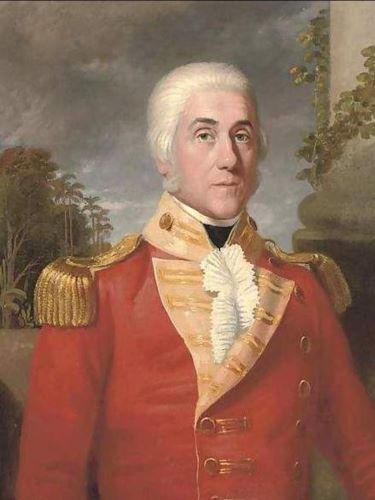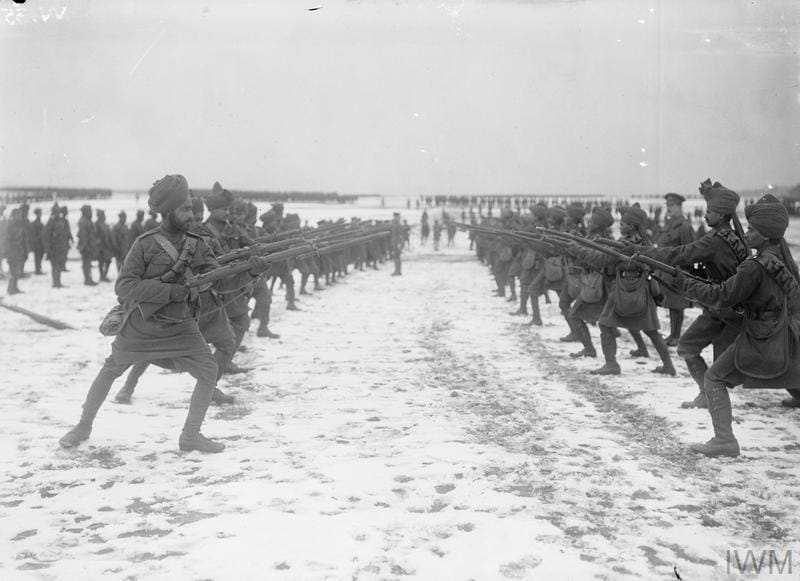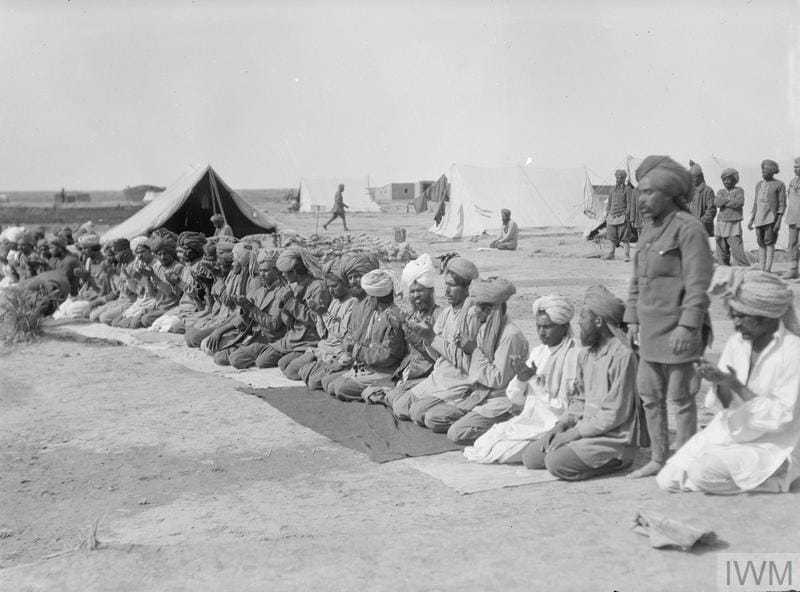
Excerpts from the unpublished book that also traces the origin of Baloch Regiment, which the author served as a soldier of Pakistan Army. According to him the Baloch Regiment was the outfit of Burma Battalion
[This is 2nd part of the excerpts. The first part narrates the Colonial British Officers’ visits to author’s hometown Ratodero, conferring the appreciation letters to his grandfather, and also the myth of Bhuttos. It would be advisable to click on Part-I and read it for a better understanding of the series. – Nasir Aijaz, Editor Sindh Courier]
Col ® Hassan Imam
The past great wars have left much lessons for global powers. Military History is another wonderful discipline, and those who are keen to read about past wars and the people, will surely enjoy every moment. I will bring forth the history of my unit for the interest of my readers; this is the same outfit which also had flourished Colonel Mayhew, the famous colonial officer. Madras Infantry was the outfit which Colonel Alfred Hercules Mayhew had served when transferred from Bombay Staff Corps.
Today that outfit is called 5 Baloch Regiment. It was also named as the Burma Battalion. This is the same outfit which I (Colonel Hassan imam) served as an officer in Pakistan Army. When I joined my unit, it was known as 5 Baloch Regiment (Burma Battalion).
5th Burma Battalion to the Baloch Regiment – Timeline
(Based on information collected from Unit history, war diaries, digest of service and war museum UK)
Pre-partition History
Before going into detailed account of past history, I must mention here that my maternal uncle Pir Baksh Burrdi is among those veterans of World War II who fought bravely in Burma war (World War II 1939-1945). Pir Bakhsh who was known as Mama Peru, was a gunner in British Indian Artillery corps. I remember my childhood days, whenever we will ask him ‘mama tell us about your experience in Burma war’, he showed us the head injuries which he received from Artillery mortar shell. His ears were also damaged and he had difficulty in hearing normal voice.
Genesis of Burma Battalion
Following the conquest of Mysore in 1799 by the British East India Company, it was decided to raise several new battalions of Madras Infantry to cater for the increase in British territories in Madras Presidency. Consequently, the Governor-in-Council at Madras issued a General Order on 24 December 1799 to raise three new regiments of two battalions each. The 5th Battalion 8th Punjab Regiment (5/8th Punjab) was raised as the 1st Battalion 17th Regiment (1/17th Madras Native Infantry) on 1st January 1800 at Guntoor (Guntur, Andhra Pradesh, India) from drafts furnished by 2/1st, 2/2nd, 2/5th, 1/8th, 1/9th, 1/10th, 1/11th, 2/11th and 2/12th Regiments. Lieutenant Colonel William Kinsey (later Lieutenant General) was appointed 1st Commanding Officer of the battalion while Colonel George Wahab (later Major General) was appointed Colonel of the 17th Regiment, giving his name to the 1st Battalion (Wahab ki Paltan).
In 1803, the 1st Battalion 17th Regiment of Madras Native Infantry (1/17th MNI) took part in 2nd Marhatta war 1803-5. As part of Major General Campbell’s Corps of Observation at Moodgul in the Raichoor Doab battalion launched a surprise attack on Dhoondia’s camp near Hunmunsagar. Two thousand freebooters were killed and more than a thousand were taken prisoners. In 1805 during rebellion in Malabar and Canara, it took a year’s hard fighting to quell the rebellion, which finally ended on 30 November 1805.
Award of Battle Honor (Cochin)
On 19 January, during the Travancore War 1808-9, a large force of rebels attacked the town of Cochin, which was being defended by six companies of 1/17th MNI under the command of Major WH Hewitt. Major Hewitt and his men repulsed the attack after a gallant and skilful defense. For the gallant defense, the battalion was later awarded the Battle Honor of “Cochin”. Battalion also carried out operations against the Pindaris, in November 1817and participated in Third Marhatta War 1817-19.
Re-designation as 33rd Regiment MNI
In 1824, Madras Army was renumbered and old system of single-battalion regiment was restored. The regiments were re-numbered in the order in which they were first raised. The new designations of 1/17th MNI was 33rd Regiment MNI.
1st Anglo- Burmese WAR
The 33rd MNI Was part of “The Burmese Expeditionary Force”, which assembled under the command of Brigadier General Sir Archibald Campbell, was 10,644 strong, half of whom were Europeans. The 33rd MNI took part in Coorg War (1832-34) though losses during the war were minimal however the outbreak of Cholera took lives of two officers and 67 other ranks.
The Great Rebellion 1857-58
The rebellion erupted at Meerut on 10 May 1857, with mutiny of the 3rd Cavalry and soon engulfed most of North India. When open rebellion broke out at Nagpur on 13 June 1857, the 33rd MNI (5/8th Punjab) was garrisoned in the Central India 1857-58 Fort of Sitabaldi. Three hundred men of the battalion under the command of Captain Francis Applegath and Lieutenant FJH Burnes moved to the city and disarmed the mutinous Nagpore Irregular Cavalry without any incident. The mutiny soon spread to the territories of Saugor and Narbada, where several units of the Bengal Army were stationed, and a force called the Nagpore Movable Column was organized to counter the rebellion in these districts. The column, commanded by Lieutenant Colonel John Millar, the Commandant of 33rd MNI, included 425 rank and file of the 33rd MNI, besides some cavalry and artillery of Madras Army and a company of Irregular Infantry.
From 29 August till 17 September Damoh Balakot fort of Hindooria Narsingarh and Narsinghpur were relieved. Four sepoys of 33rd MNI were killed in the action. On 27 September while marching to Jubbulpore, the column encountered a rebel force of some 1500 and drove it back with considerable loss. Lieutenant Watson was wounded in the action.
During November, the 33rd MNI was engaged in two more actions and by the end of the month, the districts north of the Narbada had been largely cleared of the rebels.
On 24 December, 300 men of 33rd MNI under Colonel Millar, supported by detachments of cavalry and two guns, advanced towards the rebel hideout in the hills near Katangi in Jubbulpore from two directions.
By 26 December, the rebel position was cleared. After one last stand at Gwalior on 19 June 1858, where the Rani of Jhansi died a soldier’s death, the rebel armies in Central India were finally destroyed, although mopping up operations continued until July 1859.
Post-Mutiny Military Reforms
Widespread changes were initiated within the military after 1857. In 1885, the word ‘Native,’ being considered pejorative, was dropped from the nomenclature of all army units. In 1886, the system of ‘Linked Battalions’ was introduced under a modification of the Cardwell Scheme. The new scheme can be described as the beginning of the regimental system in the Indian Army. The groupings of 8th Punjabis were:
- 2nd Madras Infantry (MI)
- 29th MI (1/8th Punjab)
- 33rd MI (5/8th Punjab)
Third Burma War 1885-87
In 1878 in the absence of a central authority Burma slipped into a state of anarchy and insurgency spread throughout upper Burma. King Thibaw’s hobnobbing with the French provoked the British into invading Burma for the third and last time. British occupied Mandalay on 24 November 1885 and deposed the Burmese king. The proclamation of annexation turned the general lawlessness into an anti-British movement and the British became embroiled in yet another guerrilla war in Burma. As anarchy and insurgency spread throughout Upper Burma the 33rd MI (5/8th Punjab) carried out operations against rebel leaders and gangs of bandits. It was backbreaking work in extremely difficult conditions, with malaria accounting for a large number of casualties. Battalion was awarded the Campaign Honor of ‘Burma 1885-87’ for its services during the campaign.
 Re-designation as 33rd Regiment (3rd Burma Battalion) Madras Infantry
Re-designation as 33rd Regiment (3rd Burma Battalion) Madras Infantry
In1889, the 33rd MI (5/8th Punjab) embarked for Moulmein in Burma, when en route at Port Blair, it received orders for disbandment. It returned to Madras where on 30 April 1890, the final mustering out took place. Next day, the battalion was re-raised at Toungoo in the Southern Shan States of Burma as 3rd Regiment Burma Infantry; re-designated as 33rd Regiment (3rd Burma Battalion) Madras Infantry in 1891. The nucleus of the regiment was provided by the Shan Levy and a Sikh battalion of the Burma Military Police. The final composition of the battalion was five companies of Sikhs, two of Punjabi Muslims, and one of Pathans. Major EB Nixon of 37th Dogras was appointed as its first commandant with an entirely new complement of officers. In 1891, the battalion underwent a traumatic experience when on the parade ground a Pathan NCO shot dead Major Nixon along with the Adjutant, Lieutenant Jamieson and two sepoys over a trivial complaint. He was overpowered and captured by Havildar Peter Durand, who received the Indian Order of Merit (IOM) for his bravery. A second murder in 1900, of Subedar Major Dure Khan in which four Pathan sepoys were implicated, led to the replacement of Pathans by Punjabi Muslims.
After replacements, the battalions had lost all connection with their Madrassi predecessors other than the nomenclature. By then the unit preferred to be called as Burma Battalion. In most cases, the only items taken over at the time of reconstitution were the Regimental Colors. Therefore, the unit does not possess any detailed regimental records prior to the reconstitution, which sadly are lost to history.
 During the winter of 1891-92, 3rd Burma Battalion (5/8th Punjab) took part in relief of the besieged post of Sedon near the Chinese border on 14 February 1892. Subedar Prem Singh was awarded the Order of British India (OBI), while three sepoys of the battalion received the IOM for conspicuous bravery. The battalion was again employed against the Kachins on columns from Bhamo in 1893, and remained engaged in quelling various outbreaks. In 1894, it moved to Mandalay. In 1900, during The Boxer Rebellion battalion was ordered to move to Tongshan in North China but disembarked at Hong Kong, where it stayed for the next three years.
During the winter of 1891-92, 3rd Burma Battalion (5/8th Punjab) took part in relief of the besieged post of Sedon near the Chinese border on 14 February 1892. Subedar Prem Singh was awarded the Order of British India (OBI), while three sepoys of the battalion received the IOM for conspicuous bravery. The battalion was again employed against the Kachins on columns from Bhamo in 1893, and remained engaged in quelling various outbreaks. In 1894, it moved to Mandalay. In 1900, during The Boxer Rebellion battalion was ordered to move to Tongshan in North China but disembarked at Hong Kong, where it stayed for the next three years.
In 1901, the cumbersome titles of the Burma Battalion were simplified by removing all mention of the Madras Army. Thus, 33rd Regiment (3rd Burma Battalion) Madras Infantry (5/8th Punjab) became 33rd Burma Infantry.
Kitchener’s Reforms
The renumbering of the units in 1903 broke all links with the old presidency armies. All the infantry battalions of the Indian Army were numbered consecutively, starting with the old Bengal units and the Punjab Frontier Force. These were followed by the Madras units, the Hyderabad Contingent and finally, the Bombay units. For the Madras battalions, the formula was to add 60 to their old regimental numbers. To better reflect their new ethnic composition, the Burma Battalions were given the option of becoming Punjabi regiments. All the 8th Punjabi battalions except the 33rd Burma Infantry elected to become Punjabis. Therefore, 33rd Burma Infantry (5/8th Punjab) became 93rd Burma Infantry. After changes had brought the 8th Punjabis together, further cementing the ties between them. The new groupings with their centers was Mandalay – 92nd Punjabis, 93rd Burma Infantry & 72nd Punjabis.
The battalion remained in Burma
In 1910, orders were given to de-localize the battalion and over the next few years, it was moved to India; just in time to take part in the bloody battles of the Great War. The 93rd Burma Infantry (5/8th Punjab) was presented with “New Colors” in 1907 by the Duke of Connaught at Mandalay. Three years later, the composition of the battalion was again changed to four companies of Sikhs and four of Punjabi Muslims. In 1913, The 93rd Burma Infantry left Burma for Barrackpore in India.
______________________
 Colonel ® Hassan Imam is the former Head, Inter Services Public Relations (ISPR) Karachi Sindh.
Colonel ® Hassan Imam is the former Head, Inter Services Public Relations (ISPR) Karachi Sindh.
[…] part mainly focused the history of Burma Battalion. It would be advisable to click on Part-I and Part-II and read it for a better understanding of the series. – Nasir Aijaz, Editor Sindh […]